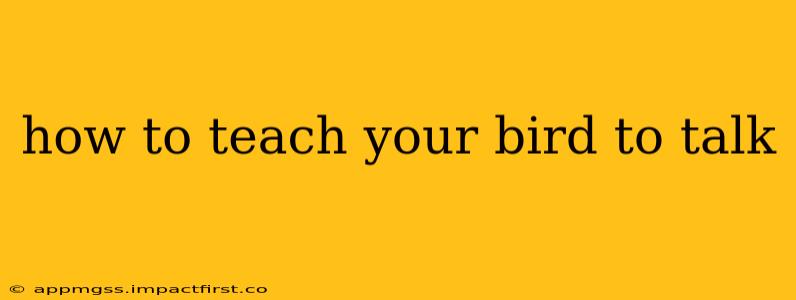Teaching your bird to talk is a rewarding experience, building a unique bond between you and your feathered friend. However, it's crucial to understand that not all birds are equally inclined to vocal learning, and success depends on patience, consistency, and the right techniques. This comprehensive guide will equip you with the knowledge and strategies to increase your chances of success.
What Kind of Bird Is Best for Talking?
Which species are most likely to talk? Some species are naturally more predisposed to vocal learning than others. Parrots, especially African Greys, Amazons, and Cockatoos, are renowned for their talking abilities. Mynah birds and certain species of starlings are also known for their vocal mimicry skills. However, even within these species, individual birds vary in their aptitude. Factors like genetics, age at acquisition, and early socialization play significant roles.
When Should I Start Training My Bird to Talk?
What's the ideal age to begin training? Ideally, you should start training your bird to talk while they are young, ideally before they reach sexual maturity. Younger birds are more receptive to learning and have a greater capacity for vocal mimicry. However, older birds can still learn, though the process may be longer and require more patience.
How Can I Teach My Bird to Talk?
What are the effective training methods? Effective training involves a combination of positive reinforcement, repetition, and patience.
1. Positive Reinforcement:
This is the cornerstone of successful bird training. Reward your bird with treats (healthy seeds, fruits, or small pieces of their favorite food) and praise immediately after they make a sound that resembles the word you’re teaching. Consistency is key; rewarding even a partial attempt helps build their confidence and encourages repetition. Avoid punishment; it's counterproductive and can damage your bond with your bird.
2. Repetition and Consistency:
Repeat the word or phrase clearly and slowly multiple times a day. Use a consistent tone and inflection. Try associating the word with the object or action it represents. For example, if teaching the word "cracker," show them a cracker while saying the word repeatedly.
3. Create a Stimulating Environment:
Birds learn better in a stimulating environment. Provide plenty of toys, opportunities for exploration, and social interaction. A bored bird is less likely to engage in learning activities.
4. Utilize Visual Aids:
Flash cards with pictures and words can be incredibly helpful, particularly for associating words with images.
5. Use Auditory Aids:
Recordings of words and phrases can be helpful. Playing recordings while you're away can aid in passive learning.
6. Be Patient and Persistent:
Teaching a bird to talk takes time and patience. Don't get discouraged if progress is slow. Celebrate small victories and maintain a positive, encouraging attitude.
How Long Does It Take to Teach a Bird to Talk?
How long until I see results? The time it takes varies greatly depending on the bird's species, age, aptitude, and the training methods employed. Some birds may learn a few words within weeks, while others might take months or even years. Consistency and patience are vital.
What are Some Common Mistakes to Avoid When Teaching a Bird to Talk?
What pitfalls should I watch out for?
- Inconsistent training: Irregular training sessions will hinder progress.
- Using punishment: This damages the bird-owner bond and creates fear.
- Expecting too much too soon: Be patient and celebrate small successes.
- Lack of stimulation: A bored bird is less likely to learn.
- Ignoring early attempts: Reward even partial attempts to encourage repetition.
Can I Teach My Bird to Talk More Than One Word?
How can I expand my bird's vocabulary? Once your bird learns a few words, you can gradually introduce new words and phrases using the same methods. Focus on short, simple words initially. As their vocabulary grows, you can introduce more complex phrases. Always maintain positive reinforcement and a stimulating environment.
By following these guidelines and remaining patient and persistent, you can significantly increase your chances of successfully teaching your bird to talk and fostering a strong, communicative bond. Remember that every bird is an individual, and their learning pace will be unique. Celebrate their progress, and enjoy this enriching journey together!
